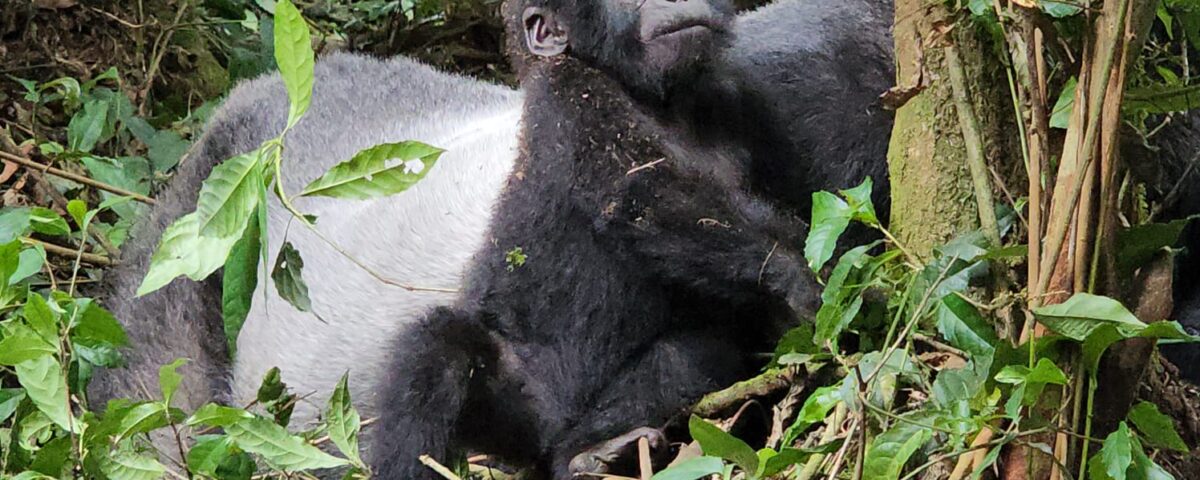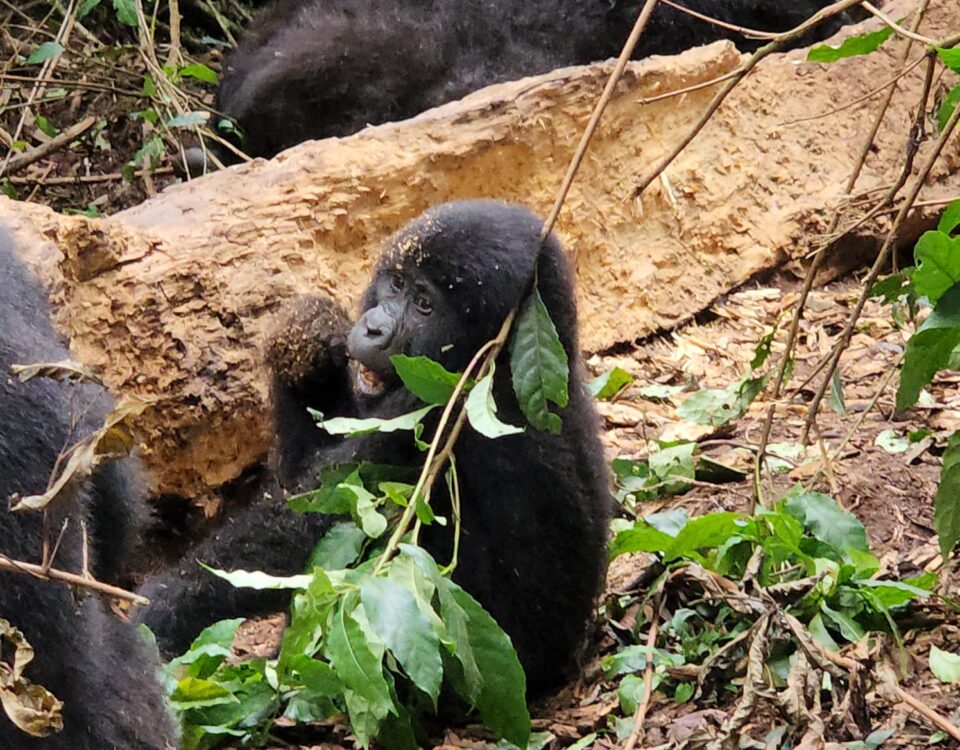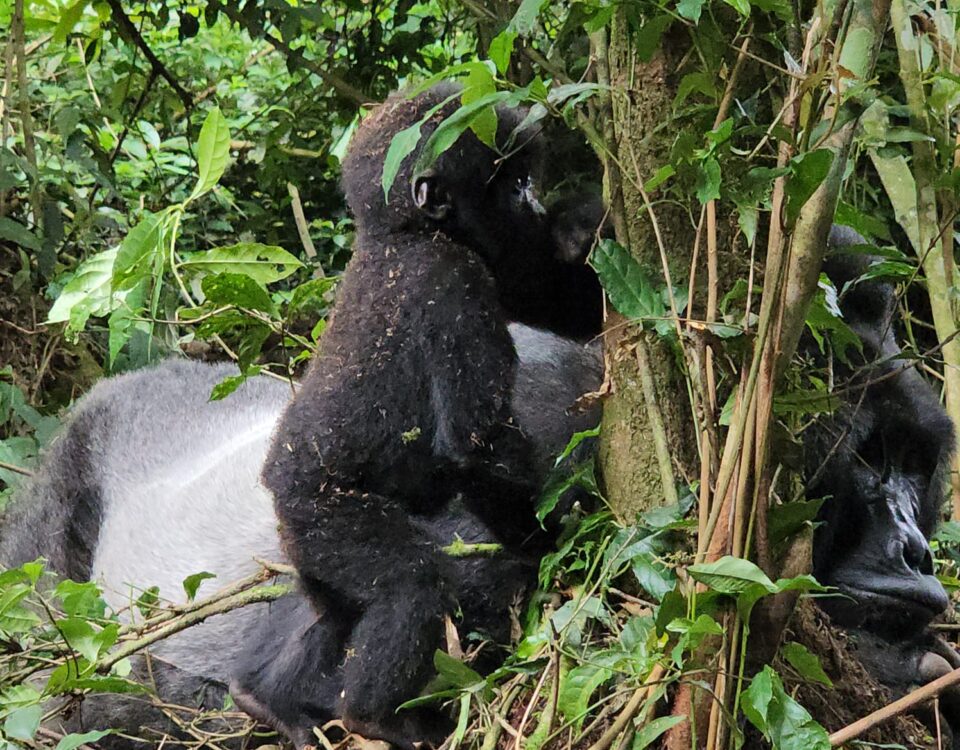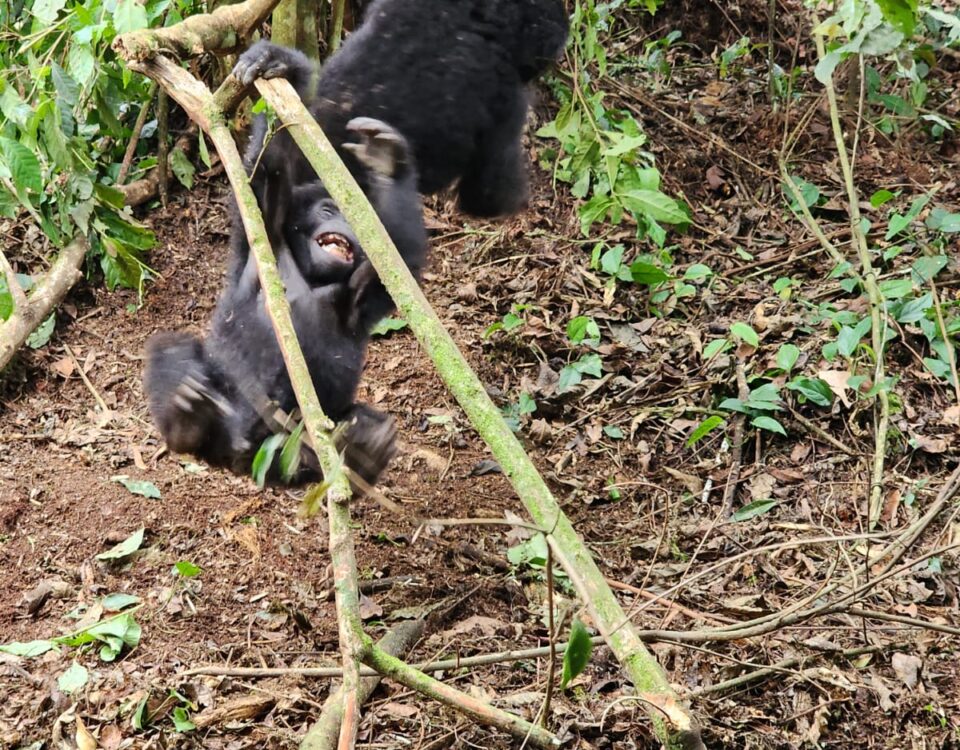
What is the Age Limit for Gorilla Trekking in Rwanda?
April 2, 2025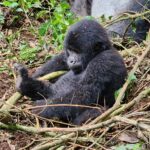
Do I Need a Guide for Gorilla Trekking in Rwanda?
April 2, 2025How Long Can I Spend with the Gorillas During a Trek?
How Long Can I Spend with the Gorillas During a Trek? Gorilla trekking in Rwanda is one of the most thrilling wildlife experiences in the world. For many travelers, this adventure is a once-in-a-lifetime opportunity to get up close and personal with the magnificent mountain gorillas that inhabit the dense forests of Volcanoes National Park. These gentle giants share 98% of their DNA with humans, which makes observing them in their natural habitat an unforgettable experience.
One of the most common questions that people have when planning their gorilla trekking adventure is: How long can I spend with the gorillas during a trek? This is an essential question to understand before embarking on this incredible journey. The time spent with the gorillas is one of the key factors that contribute to the overall experience, and understanding the limitations, as well as the factors that influence the duration, will help you better prepare for the trek.
In this article, we will answer the question of how long you can expect to spend with the gorillas, as well as the factors that can influence the time spent during a trek. We will also discuss the regulations in place to protect both the trekkers and the gorillas.
Best Uganda Rwanda Safari Packages
How Long Do You Spend with the Gorillas During a Trek in Rwanda?
On a typical gorilla trekking expedition in Rwanda, visitors are allowed to spend 1 hour with the gorillas once they have found them. This time limit is enforced by the Rwanda Development Board (RDB) to ensure that the gorillas are not disturbed for too long. While one hour may sound brief, it’s actually a sufficient amount of time to observe these majestic creatures in their natural environment, provided you make the most of it.
After trekking through the dense forests and often challenging terrain to find the gorillas, your guide will lead you to the family of gorillas you have been assigned to observe. Once you arrive at the gorillas, you’ll have the opportunity to watch them interact, eat, groom each other, and sometimes even play. You’ll also have the chance to witness the incredible family dynamics and behaviors that are so similar to those of humans.
Why the One-Hour Limit?
The one-hour time limit is not arbitrary; it is in place for several important reasons, all of which contribute to the conservation of the mountain gorillas and the safety of the visitors. Below are some of the key reasons why the one-hour limit exists:
- Minimizing Human Impact on the Gorillas
Mountain gorillas are an endangered species, and their protection is of utmost importance. By limiting the amount of time spent with them, it reduces the likelihood of human interaction causing stress or disruption to the gorillas. Long visits or close contact could negatively affect their behavior and health. For example, prolonged exposure to humans can result in increased stress levels for the gorillas, which can affect their well-being. To protect both the gorillas and the visitors, the one-hour rule helps maintain a healthy balance between observation and conservation.
- Respecting the Gorillas’ Privacy
The gorillas are wild animals, and while they are habituated to human presence, they should still be given space and respect. The one-hour time limit ensures that the gorillas are not overly disturbed or forced into uncomfortable situations. Habituation refers to the process where gorillas gradually become accustomed to the presence of humans, but they still value their privacy. Therefore, a short but impactful visit allows visitors to witness the gorillas in their natural behavior without infringing upon their peace.
- Safety of Both Visitors and Gorillas
Mountain gorillas are strong, intelligent, and social animals, and their reactions to human presence can be unpredictable. The one-hour limit is also in place for safety reasons. Extended visits may increase the chances of accidental encounters that could lead to uncomfortable situations. The hour-long window gives trekkers sufficient time to enjoy the experience, but without lingering too long and putting themselves or the gorillas at risk.
Factors That Can Influence Time Spent with Gorillas
While the official limit is set at 1 hour, there are some factors that can influence the exact time you spend with the gorillas during a trek. Below are some factors that may play a role:
- Location of the Gorilla Group
Gorillas are wild animals, and their movements are unpredictable. Some days, the gorillas may be located relatively close to the starting point of the trek, allowing for a shorter and less strenuous hike to reach them. On other occasions, the gorillas might be located deeper in the forest, requiring longer treks through challenging terrain. The more time it takes to locate the gorillas, the less time you’ll have to spend with them. However, you are guaranteed to spend at least one hour with them once you arrive.
- Weather Conditions
Weather plays a significant role in gorilla trekking. Rwandan weather can be unpredictable, and trekkers are advised to be prepared for rain or heat. Heavy rain can make the trek more difficult and time-consuming, which could slightly reduce the time you spend with the gorillas. However, once you locate the gorilla family, you will still have the opportunity to observe them for up to one hour.
- Group Size and Experience
Typically, each gorilla trekking group is composed of a maximum of 8 people. Smaller groups tend to have a more intimate experience and may have an easier time following the guide through the forest and getting to the gorillas. Larger groups might find it a bit more challenging, and the time spent with the gorillas may be slightly affected by the need to accommodate all visitors. However, regardless of the group size, everyone will have the opportunity to spend the same amount of time with the gorillas.
- Guides’ Efficiency
The guides who accompany the trekkers are highly experienced in finding the gorillas. They know the habits of the gorilla families and their locations, which helps minimize the time spent searching for the gorillas. A skilled guide can help ensure that you make the most of your time once you locate the gorillas, maximizing the one hour you’re allowed to observe them.
What to Do During Your One Hour with the Gorillas
During your one-hour visit with the gorillas, it’s important to follow the rules set by the park authorities to ensure both your safety and the safety of the gorillas. Here’s what you can expect to do:
- Observe Their Natural Behavior
Once you’ve arrived at the gorilla family, your guide will provide insights into their behavior, hierarchy, and daily routines. You’ll witness the gorillas’ natural interactions, such as playing, eating, and grooming. It’s a fascinating experience to see how similar their behavior is to that of humans.
- Respect the Guidelines
To ensure the gorillas are not disturbed, there are strict guidelines to follow. You’ll be asked to keep a safe distance of at least 7 meters (21 feet) from the gorillas, refrain from making loud noises, and not take flash photography. These rules help maintain a peaceful environment for both visitors and gorillas.
- Take Photos and Videos
One of the highlights of the trek is capturing memories of your encounter with the gorillas. You are allowed to take photographs and videos, but it’s important to do so discreetly, without disturbing the animals. Make sure to avoid using flash photography, as this can startle the gorillas.
Conclusion
While the official time allowed to spend with the gorillas in Rwanda is limited to one hour, this time is typically enough to appreciate the incredible behavior and intelligence of these endangered creatures. The strict time limits are put in place for the protection of both the gorillas and the trekkers, ensuring that the experience remains safe, respectful, and sustainable for years to come. By following the guidelines and making the most of your one hour, you can enjoy an unforgettable and meaningful encounter with one of the world’s most remarkable animals.

